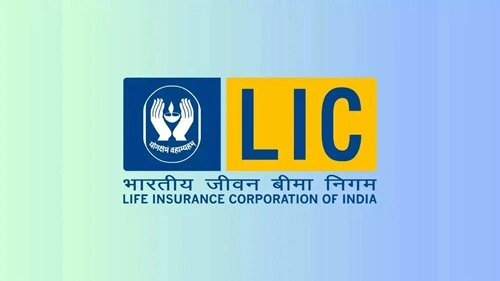Founded in 1956 through nationalisation, LIC remains India’s largest life insurer, boasting approximately 64% market share in first-year premiums as of Q1 FY25, and 76.6% share in group business. In Q1 FY25 (to June 2024), LIC’s consolidated net profit rose 9% YoY to ₹10,544 cr, with net premiums climbing 16% YoY to ₹1.14 lakh cr. By FY 2024–25 end, annual net premium income reached a staggering ₹1.47 lakh cr—up 38% YoY—while profit after tax surged 38% to ₹19,013 cr. LIC also reported an improved solvency ratio of 2.11, reflecting robust financial health. These metrics establish LIC as a dominant and financially sound insurer, underpinning the SWOT analysis that follows.

Strengths
1. Market Dominance & Extensive Reach: LIC remains the undisputed leader in Indian life insurance with ~64% share in individual FY reversals, and a staggering ~76.6% in group business. Its network includes 2,048 branches, 1,580 satellite offices, and over 1.3 million agents, far surpassing private peers.
2. Huge AUM & Institutional Footprint: As a monopoly-turned-public enterprise, LIC’s Asset Under Management (AUM) is estimated at over ₹330 lakh crores (~$180 b) by March 2024, marking it as India’s largest investor.
3. Strong Profit & Solvency Position: LIC’s FY25 net profit exceeded ₹19,000 cr (+38%), with Q1 profits near ₹10,544 cr (+9%). Its solvency strength (2.11 vs. 1.50 IRDAI norm) provides a cushion against policyholder claims.
4. Product Diversity & Investment Capabilities: LIC offers life, health, pension, unit-linked, and bancassurance products, and runs subsidiaries including LIC Mutual Fund, LIC Housing Finance, and MIC, enabling cross-selling opportunities.
5. Brand Strength & Trust: With the slogan “Yogakshemam Vahamyaham” and decades of policyholder trust, LIC is consistently ranked among India’s most trusted brands.
Weaknesses
1. Bureaucratic Structure & Limited Innovation: As a PSU, LIC contends with hierarchical processes and slower digital adoption, compared to agile, tech-savvy private insurers .
2. Aging Workforce & Cost Burden: Despite lower employee costs contributing to Q4 FY25 margins, LIC continues to carry high fixed costs due to its extensive agency setup.
3. Legacy Liabilities & Low Yields: With a significant chunk of liabilities in low-return participating policies, LIC’s investment margin is constrained against private competitors offering new non-par products.
4. Overdependence on Traditional Channels: A heavy reliance on agent and branch-based sales makes LIC vulnerable to private insurers riding on digital distribution channels.
Opportunities
1. Digital Expansion & Cost Efficiency: LIC has a chance to upgrade its digital sales channels, policy servicing, and distribution via apps, bancassurance tie-ups, and e-insurance accounts—improving cost structures and customer experience.
2. Rural & Financial Inclusion: LIC can deepen financial reach in Tier 3 and 4 cities through mission-driven policies and new product designs, addressing India’s underserved segments.
3. Product Innovation & ULIP Growth: Introducing flexible investment-linked and protection-focused products can attract younger demographics seeking balance between yields and coverage.
4. International & Mutual Fund Synergies: LIC’s overseas subsidiaries (Nepal, Lanka, Bahrain) and LIC MF provide avenues for product diversification and distribution leverage .
5. Strategic Tech Partnerships: Collaborating with InsurTech startups for microinsurance, simplified onboarding, AI underwriting and claims automation can enhance LIC’s competitiveness.
Threats
1. Heightened Private Competition: With FDI cap raised to 74%, private and foreign insurers such as SBI Life, HDFC Life, ICICI Pru, Max Life are aggressively capturing market share via innovation and customer engagement.
2. Regulatory Overhaul & ROE Constraints: Higher solvency norms, ULIP transparency rules, and longevity-linked product regulations may compress traditional product margins.
3. Market Volatility & Investment Risk: LIC’s AUM is sensitive to stock and bond market fluctuations; any volatility may hit its returns and risk profile significantly.
4. Changing Customer Behavior: Millennials increasingly prefer online and customized insurance products; LIC needs to modernize to stay relevant.
5. Interest Rate Risks: Rising interest rates may devalue bond portfolios held for guaranteed returns, affecting balance sheet valuation and underwriting profitability.
Future Outlook
Looking ahead to FY 2026–28, LIC is positioned at a strategic inflection point that demands decisive modernization.
Digital Transformation & Omnichannel Sales: LIC must accelerate its digital roadmap—mobile apps, agent scripting tools, virtual onboarding—to keep pace with agile competitors and reduce per-policy costs.
Product-Risk Balancing: Enhance focus on non-par, ULIP, term life, and health insurance products to improve margins and appeal to younger customers seeking flexibility.
Cost Rationalisation: Continue reducing employee and agency costs through process automation, while optimizing branch footprint based on performance metrics.
Investment Modernization: LIC should rebalance its AUM towards higher-yield corporate bonds, strategic equities, and real estate assets to elevate investment returns and shareholder value.
Strong Brand & Inclusion Play: Leverage trust and brand appeal to launch financial literacy initiatives in semi-urban markets, improving penetration and acquisition.
Regulatory Adaptation & Solvency Optimization: Anticipate IRDAI changes (e.g., risk based capital, ULIP charge structures) and build agile compliance systems.
Partnerships & Subsidiary Value Growth: Capitalize on LIC’s subsidiaries: LIC MF, HFL, housing finance, and cross-sell bancassurance to deepen customer engagement and ROE.
If LIC can effectively transform digitally, expand modern product mix, optimize costs, and manage its massive AUM intelligently, it is well positioned to maintain ~6–8% RoE, sustain 10–12% premium growth, and remain India’s dominant insurer through FY 2030—and beyond—while redefining itself for a workplace of tomorrow.